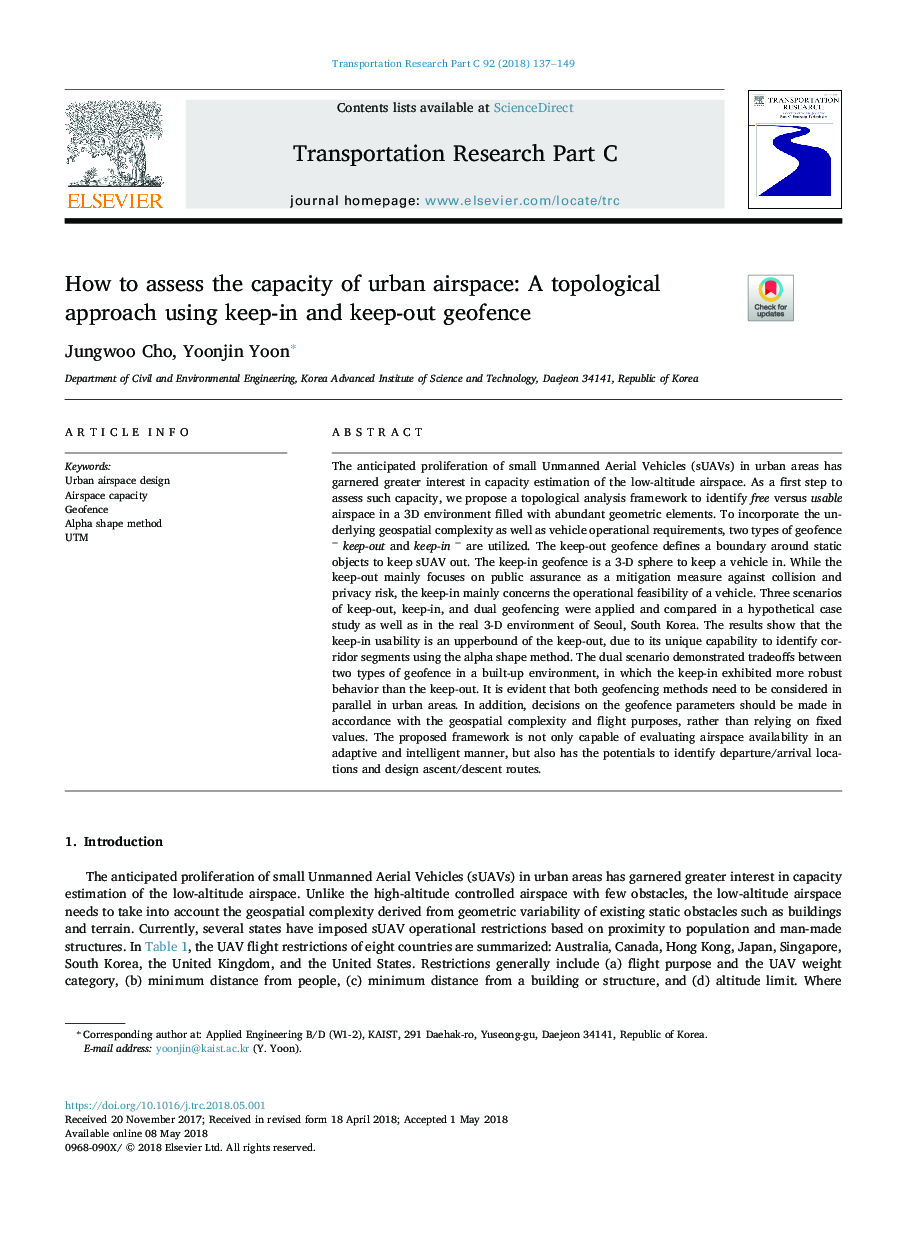| کد مقاله | کد نشریه | سال انتشار | مقاله انگلیسی | نسخه تمام متن |
|---|---|---|---|---|
| 6935826 | 1449656 | 2018 | 13 صفحه PDF | دانلود رایگان |
عنوان انگلیسی مقاله ISI
How to assess the capacity of urban airspace: A topological approach using keep-in and keep-out geofence
ترجمه فارسی عنوان
چگونگی ارزیابی ظرفیت فضای هوایی شهری: یک رویکرد توپولوژیک با استفاده از زمینه نگهداری و نگهداری از محیط زیست
دانلود مقاله + سفارش ترجمه
دانلود مقاله ISI انگلیسی
رایگان برای ایرانیان
کلمات کلیدی
موضوعات مرتبط
مهندسی و علوم پایه
مهندسی کامپیوتر
نرم افزارهای علوم کامپیوتر
چکیده انگلیسی
The anticipated proliferation of small Unmanned Aerial Vehicles (sUAVs) in urban areas has garnered greater interest in capacity estimation of the low-altitude airspace. As a first step to assess such capacity, we propose a topological analysis framework to identify free versus usable airspace in a 3D environment filled with abundant geometric elements. To incorporate the underlying geospatial complexity as well as vehicle operational requirements, two types of geofence -keep-out and keep-in- are utilized. The keep-out geofence defines a boundary around static objects to keep sUAV out. The keep-in geofence is a 3-D sphere to keep a vehicle in. While the keep-out mainly focuses on public assurance as a mitigation measure against collision and privacy risk, the keep-in mainly concerns the operational feasibility of a vehicle. Three scenarios of keep-out, keep-in, and dual geofencing were applied and compared in a hypothetical case study as well as in the real 3-D environment of Seoul, South Korea. The results show that the keep-in usability is an upperbound of the keep-out, due to its unique capability to identify corridor segments using the alpha shape method. The dual scenario demonstrated tradeoffs between two types of geofence in a built-up environment, in which the keep-in exhibited more robust behavior than the keep-out. It is evident that both geofencing methods need to be considered in parallel in urban areas. In addition, decisions on the geofence parameters should be made in accordance with the geospatial complexity and flight purposes, rather than relying on fixed values. The proposed framework is not only capable of evaluating airspace availability in an adaptive and intelligent manner, but also has the potentials to identify departure/arrival locations and design ascent/descent routes.
ناشر
Database: Elsevier - ScienceDirect (ساینس دایرکت)
Journal: Transportation Research Part C: Emerging Technologies - Volume 92, July 2018, Pages 137-149
Journal: Transportation Research Part C: Emerging Technologies - Volume 92, July 2018, Pages 137-149
نویسندگان
Jungwoo Cho, Yoonjin Yoon,
